
11 Apr What is an ISO 8 Cleanroom? Definition and Requirements
In research and manufacturing, it is sometimes necessary to control environmental conditions, such as temperature, humidity, or even airborne particle counts. By doing this, organizations can avoid issues with sensitive processes and products. Cleanrooms, which regulate airborne particles, are one such type of controlled environment. In this article, we’ll focus specifically on ISO Class 8 cleanrooms, explaining what they are, their requirements, applications, and more.
What is an ISO 8 Cleanroom?
An ISO 8 cleanroom, as outlined in the ISO 14644-1 standards, is a controlled environment that limits the number and size of airborne particles. It permits no more than 3,520,000 particles (0.5 micrometers or larger) per cubic meter. ISO Class 8 cleanrooms require 10 to 25 air changes per hour and do not usually require unidirectional airflow. As a result, they are more economical than higher-class cleanrooms, such as ISO Class 5.
Specifically, these cleanrooms allow a maximum particle count for the following:
- 3,520,000 particles for sizes 0.5 micrometers or larger.
- 832,000 particles for sizes 1 micrometer or larger.
- 29,300 particles for sizes 5 micrometers or larger.
From the above, you might have noticed that there are only three categories of particle sizes. This is because ISO 7, ISO 8, and ISO 9 cleanrooms measure particles in only three specific categories. Other ISO classifications, however, may measure different or additional categories. We can see below how ISO 8 cleanrooms compare to the other classifications below.

How Particle Counts Work in ISO 8 Cleanrooms
To understand how particle counts work, it’s important to keep in mind that the maximum particle counts in cleanrooms are cumulative. This means that each particle can be counted in multiple categories based on its size. Here are a couple examples of how it works:
- If a particle is 2 micrometers in size, it is included in the count for all particles larger than 1 micrometer, and also in the counts for every size category smaller than 2 micrometers.
- Similarly, a particle that is 5 micrometers in size is counted not only in the category for particles over 5 micrometers, but also in every smaller particle size category, down to the smallest measured.
In short, a single particle is often counted multiple times, once in each size category that it meets or exceeds.
Is an ISO 8 Cleanroom the Same as a Class 100,000 Cleanroom?
Yes, ISO 8 cleanrooms are the same as Class 100,000 cleanrooms. The Federal Standard 209E (FED-STD-209E), which is now obsolete, categorized Class 100,000 cleanrooms based on the number of particles per cubic foot; it used the imperial system rather than the metric system.
Specifically, Class 100,000 cleanrooms permitted a maximum of 100,000 particles larger than 0.5 micrometers per cubic foot of air, which explains the “100,000” in Class 100,000.
The current ISO 14644-1 standard measures particles per cubic meter. Despite this, “ISO 8” and “Class 100,000” continue to be used interchangeably by some in the industry.
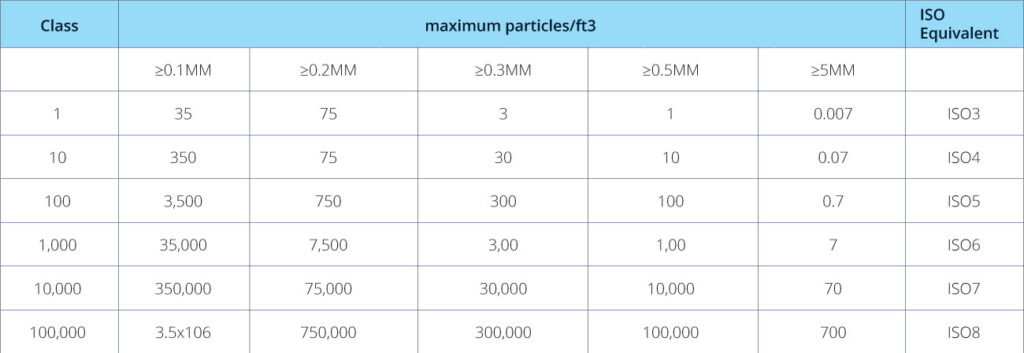
ISO 8 Cleanroom Requirements
ISO Class 8 is one of the “dirtiest” cleanroom classifications, but these environments are still much cleaner than the average office space.
They use some advanced features, though less than cleanrooms with a stricter cleanliness classification, such as ISO 7, 6, 5, and below.
Entry into an ISO Class 8 cleanroom does not require progression through cleaner spaces, as is usual for entering other higher-grade cleanrooms. However, implementing control measures to prevent contamination is still important.
Here are some of the basic requirements for these environments.
Airflow
Typically, they do not require unidirectional (laminar) airflow, which is a necessity for ISO 5 and stricter cleanrooms. Instead, they can operate with standard non-directional (turbulent) airflow systems. These systems are much cheaper, as maintaining unidirectional airflow can get expensive.
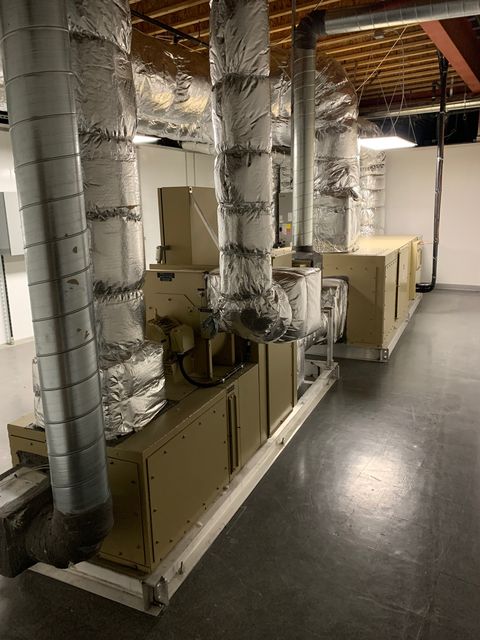
Similarly, they can be either hardwall or softwall. Softwall cleanrooms are much cheaper than hardwall cleanrooms, but they only allow a single pass-through of air. This means that softwall cleanrooms do not support complex HVAC systems. In stricter cleanrooms, you may need recirculating air to meet the proper standards, which could require a hardwall or modular cleanroom. However, in ISO 8 environments, a single pass-through is usually sufficient.
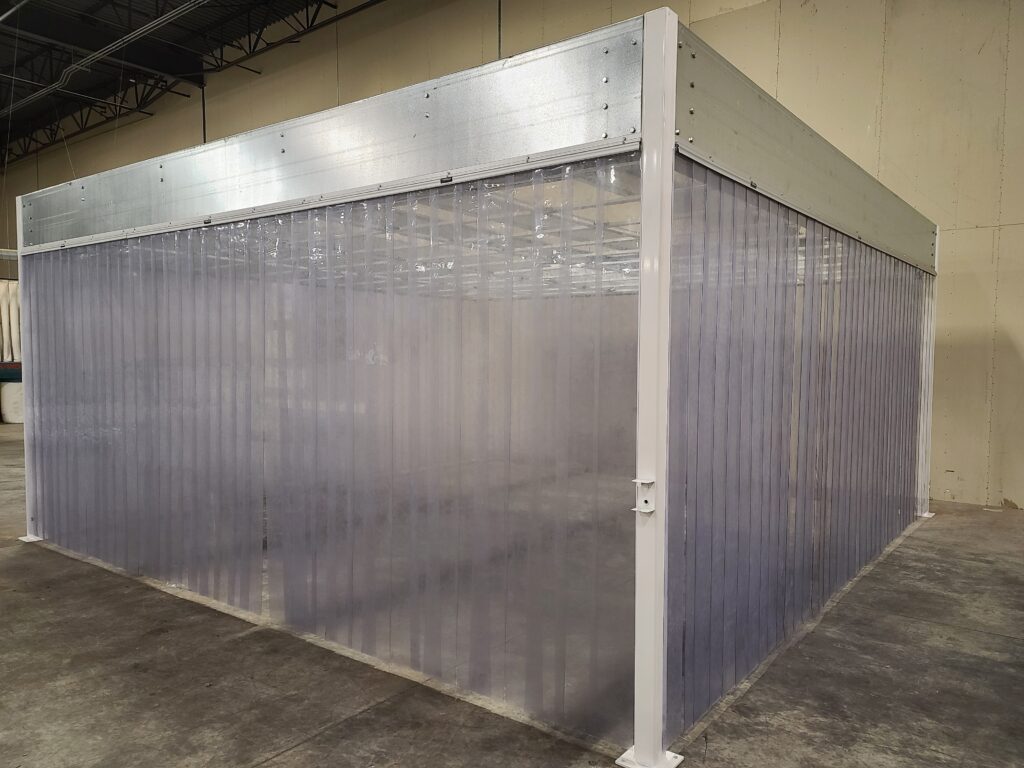
Air Changes Per Hour
These cleanrooms require around 20 air changes per hour (ACPH), which, while much less than the requirements for an ISO 5 environment, still represents a high degree of fresh air, especially compared with a typical residential or office environment. For reference, a normal residential space might have one or two ACPH.
A high ACPH rate helps these spaces maintain particle limits by continuously removing and replacing air.
Ceiling Coverage
The requirement for ceiling coverage in these environments is less demanding compared to other cleanrooms. They typically require a ceiling coverage of about 15–25%. (This percentage refers to the portion of the ceiling equipped with filters through which clean air is circulated.)
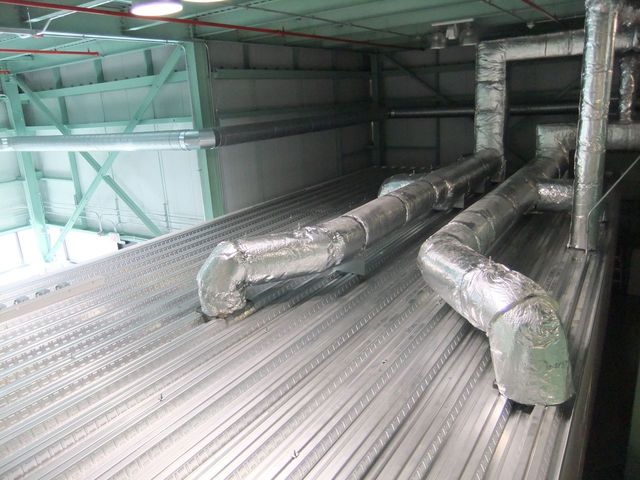
Filtration
Similarly, in these spaces, the use of high-efficiency particulate air (HEPA) filters is standard. These filters trap 99.97% of particles that are 0.3 micrometers or larger.
While HEPA filters are sufficient for most ISO 8 applications, the specific requirements for filtration can vary based on the processes being conducted within the cleanroom. The selection of HEPA or ULPA filters depends on the size of the particles that cause issues with products or processes.
Applications of ISO 8 Cleanrooms
Many industries use ISO Class 8 cleanrooms. They are typically used where some cleanliness is needed, but without the high cost and pristine conditions required by stricter ISO classifications. Here are some examples of industries that use them:
- Aerospace: Cleanrooms ensure the integrity of materials used in aircraft and spacecraft.
- Medical device manufacturing: Cleanrooms prevent any issues to the assembly of devices.
- Food processing facilities: Cleanrooms maintain the cleanliness quality of food products.
- Pharmaceutical packaging: Medications need to be compounded and packaged in sterile environments.
- 3D printing: Cleanrooms prevent contamination of printed components.
They may also be used as a place to put on gowning or other apparel before entering a cleaner space.
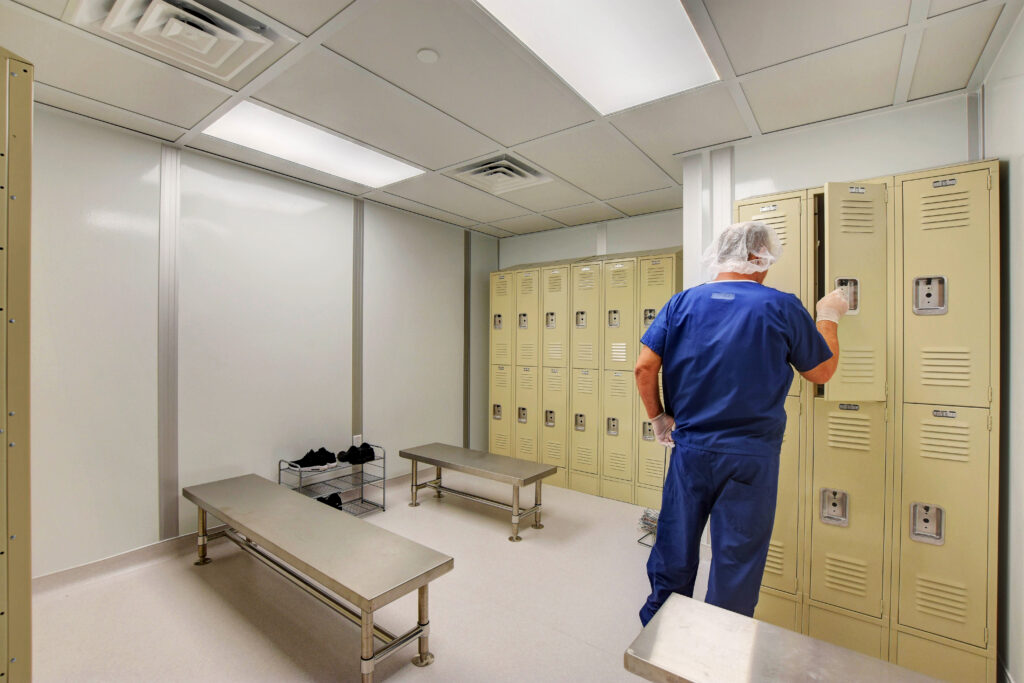
Customizing Your ISO 8 Cleanroom
Designing an ISO 8 cleanroom is not a one-size-fits-all process. Each project is different, and may include unique operational requirements, spatial constraints, or industry-specific regulations. Other considerations include material selection, layout, and HVAC system design.
With over 30 years of experience, Allied Cleanrooms knows that every project is unique. If you’re planning a cleanroom and need advice, feel free to reach out and get a free custom quote today.
Testing and Certification
Additionally, these cleanrooms undergo a series of tests after their construction to verify compliance with ISO 14644-1 standards.
Annual testing is required to monitor:
- Particle counts
- Airflow volume
- Air pressure differentials
If the cleanrooms are equipped with systems that frequently monitor particle levels, airflow, and pressure, then they do not have to be tested every year, so long as all metrics stay within standards.
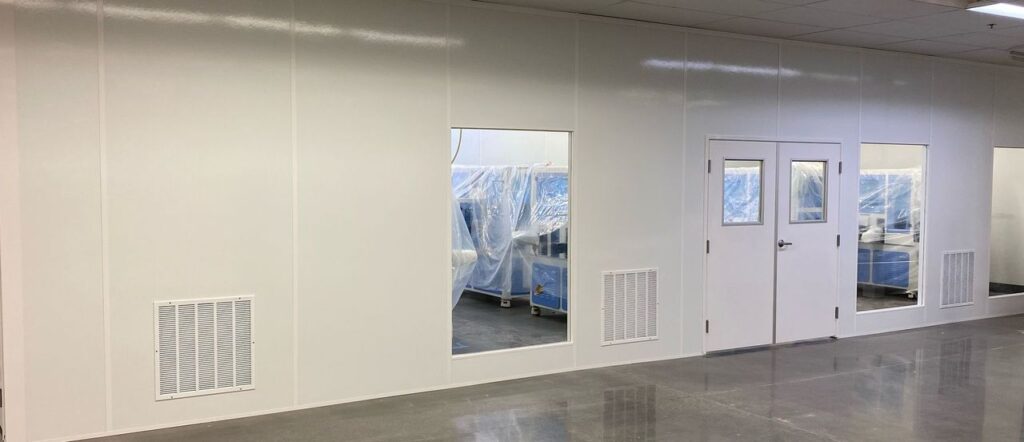
Why ISO 8 Cleanrooms Matter
ISO Class 8 cleanrooms are crucial in sectors like aerospace and 3D printing, and with the ongoing miniaturization of components and the evolution of technology, the demand for these controlled environments will continue to increase. The global cleanroom market, valued at $7.26 billion in 2024, is projected to reach $9.5 billion by 2028. Growing at 6% per year, cleanrooms will play a pivotal role in current and future production landscapes.

